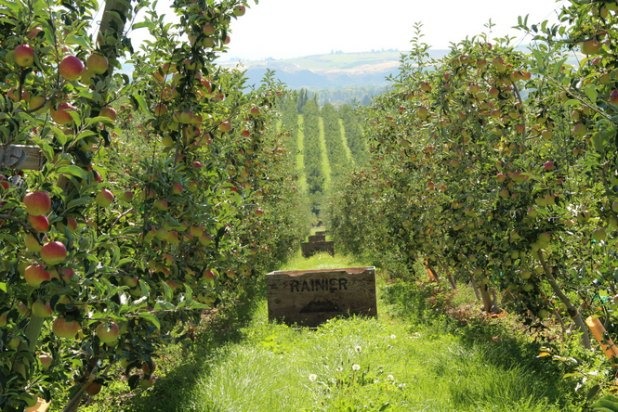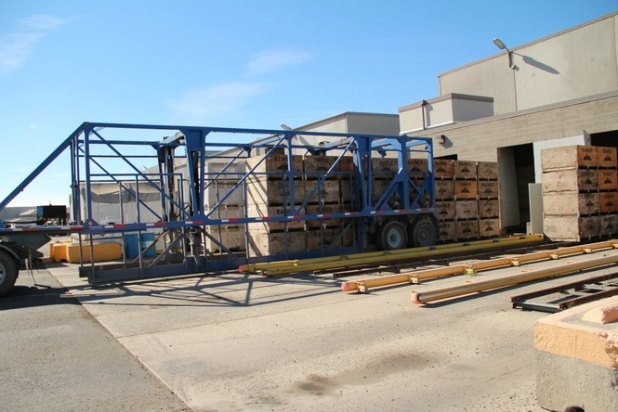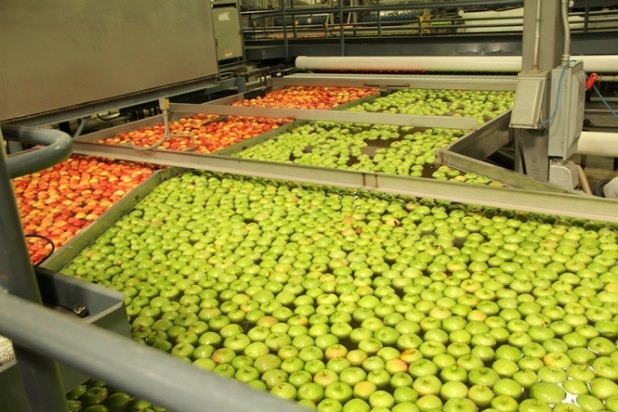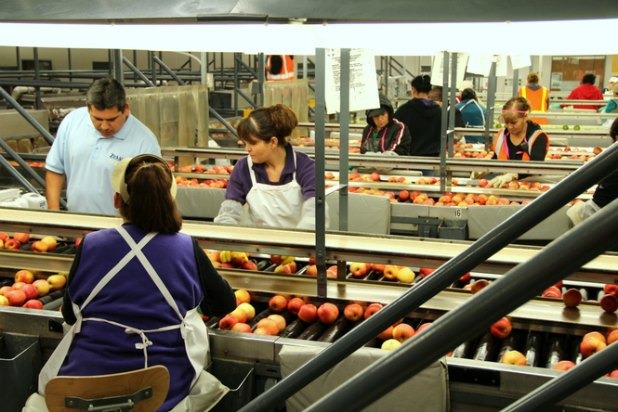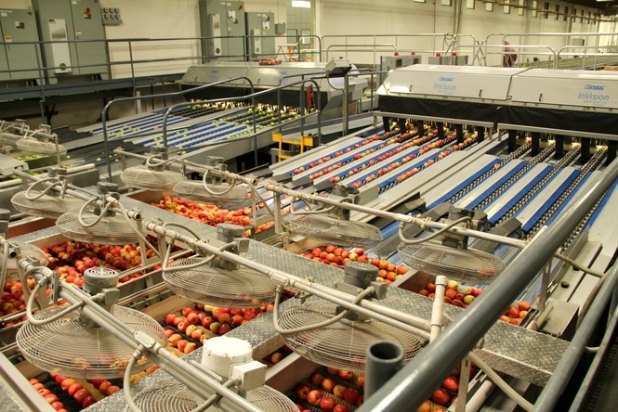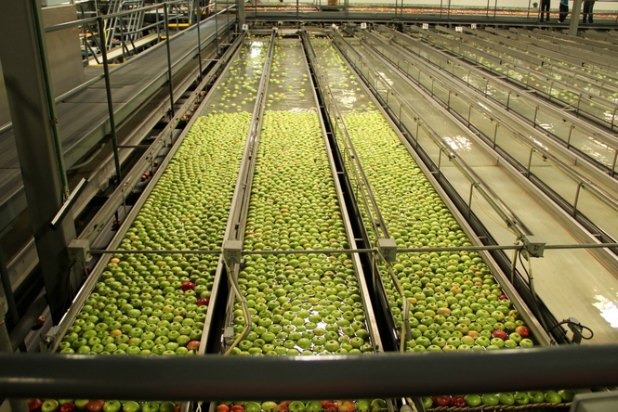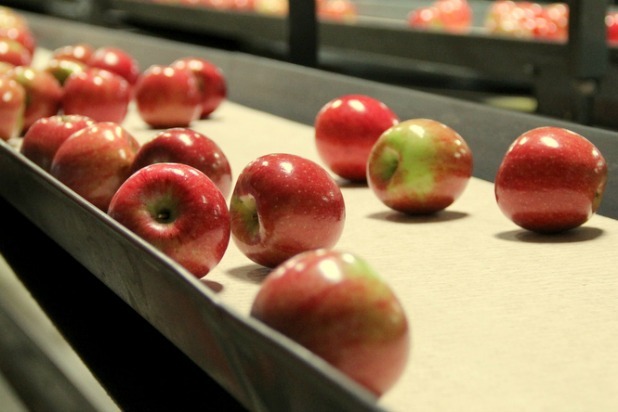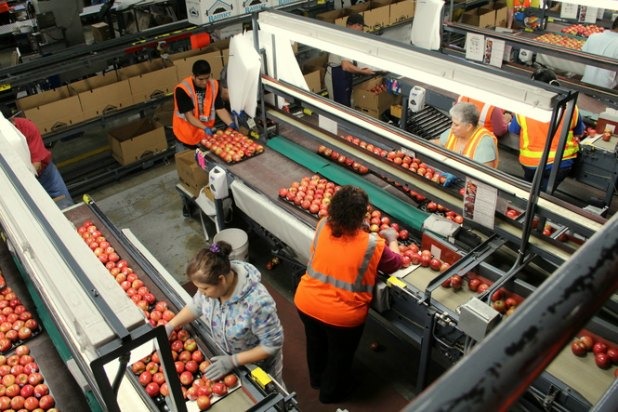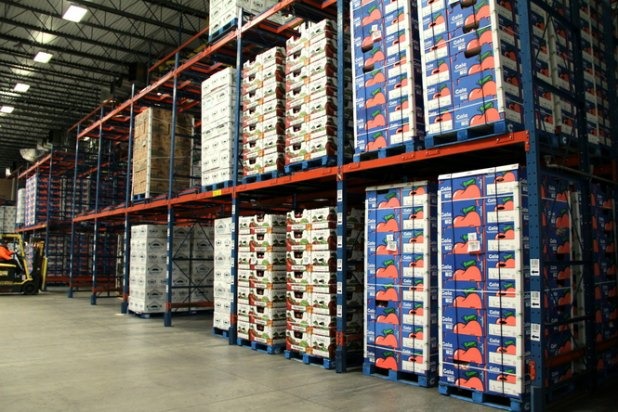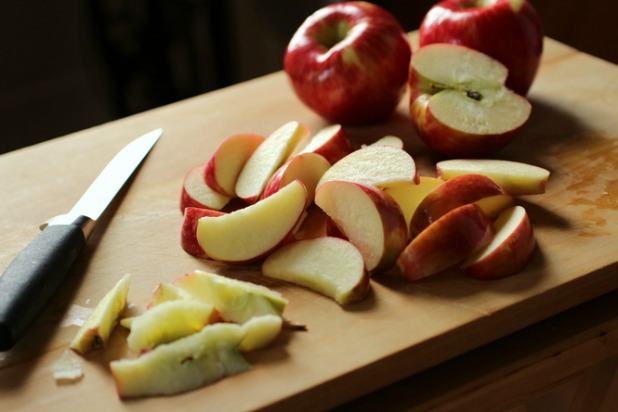An Apple's Journey From Orchard To Table Slideshow
The structure of the trees in Rainier's orchards is striking. Instead of hearty branches spreading from a thick trunk, the trees' arms are slender and delicate, supported by a network of trellises. Branches of apple varietals are grafted onto dwarf and semi-dwarf rootstock, allowing the plants to be grown closer together. The end result is more efficient distribution of plant resources, more ergonomic picking, and ultimately, a greater output of fruit per acre.
Harvest Time
Harvest falls between August and November, depending on the apply variety, and during this time, a limited supply of labor means it's often a race against the clock to get the mature apples hand-picked and loaded into large wooden crates in the appropriate timeframe. Once packed, the crates are loaded onto trucks and transported to the receiving facility where they are cleaned, sorted, and packed for consumers. Between 6,000 and 10,000 crates are received daily, which equates to 5 to 6 million apples each day.
Bobbing Apples
Once inside the receiving facilities, the crates are submerged in water, and the buoyant apples float to the surface. The crates are moved to a separate location while the fruit travels through one of two channels (each filled with a mixture water and 20 ppm of chlorine) to remove any dirt and debris.
Apple Inspection
The next step in the process is manual sorting. Trained employees visually inspect the fruit as it passes in front of them on a conveyor belt. Apples that are not suitable to be sold for eating are separated onto secondary belts and will later be sold to processing facilities to be sliced or juiced; end products of processing could include juice, cider, applesauce, pies, fruit leather, or dried apple slices.
Drying Time
Following initial inspection, apples are transported via additional water channels to the drying area. Fans dry the apples thoroughly before belts carry them, one by one, underneath a camera that utilizes computerized imaging to evaluate the fruit's color, size, and shape. This process ensures that product quality is consistent with customer expectations.
Apple Sorting
After the camera evaluation, another series of belts carries the apples down a row of flumes and deposits them into lanes that correspond with their given characteristics. These groupings are packed again into wooden crates and transported directly to the adjacent packing facility or to one of the 120 oxygen- and temperature-controlled storage rooms available on-site. Some apple varieties are ready for consumption immediately upon harvest, but others, including Braeburn and Granny Smith apples, improve in taste and texture through extended storage. This storage system ensures that high-quality fruit is available for as many months of the year as possible.
Wax Off, Wax On
To fill the orders of customers, crates of apples are transported from the sorting facility or cold storage rooms to the packing area and, in a process much like before, are submerged in water as the apples float to the surface. The apples are then cleaned with food-grade soap, thoroughly dried, and then a thin coating of plant-based, food-grade wax is applied. The multiple washings that are needed to clean the apples also remove the fruit's natural protective wax coating, so this synthetic version is added to help retain moisture, inhibit mold growth, and enhance appearance.
Bag 'Em Up
Once waxed, the apples are again inspected manually by trained employees to ensure consistent product quality, a process that is followed by mechanical application of the PLU sticker. As shown in this photo, the apples are hand-packed into packaging that has been selected by the customer. Packaging may include boxes in various sizes, clam shells, poly bags, and mesh bags and may be labeled with the Rainier Fruit Company logo or with customized brand images.
Apple Shipping
The apples' final stop in the packing facility is the temperature-controlled shipping area. Boxes of fruit are stacked on pallets according to their type and await pickup from drivers arriving in pre-arranged, one-hour time slots. A final visual inspection of the apples is completed just prior to shipping. Some of the fruit is exported internationally, but the bulk of it is transported to Costco, Walmart, Sam's Club, and various regional supermarkets throughout the U.S.
Ready to Eat
Washington-grown apples can be purchased around the world, and an essential element to preserving their crunch, taste, and juiciness is proper refrigeration at every step after picking. Once the apples are no longer refrigerated, they begin to dehydrate and respirate, leading to loss of freshness and a diminished eating experience. Grocery store produce managers are responsible for rotating apples and keeping them cool and fresh prior to sale, but once home, consumers can do the same by storing the fruit in the refrigerator until the day they plan to eat them.
